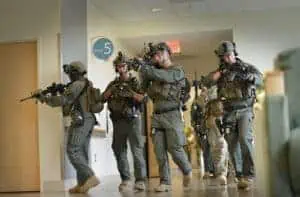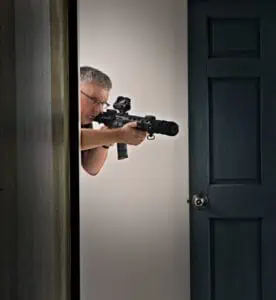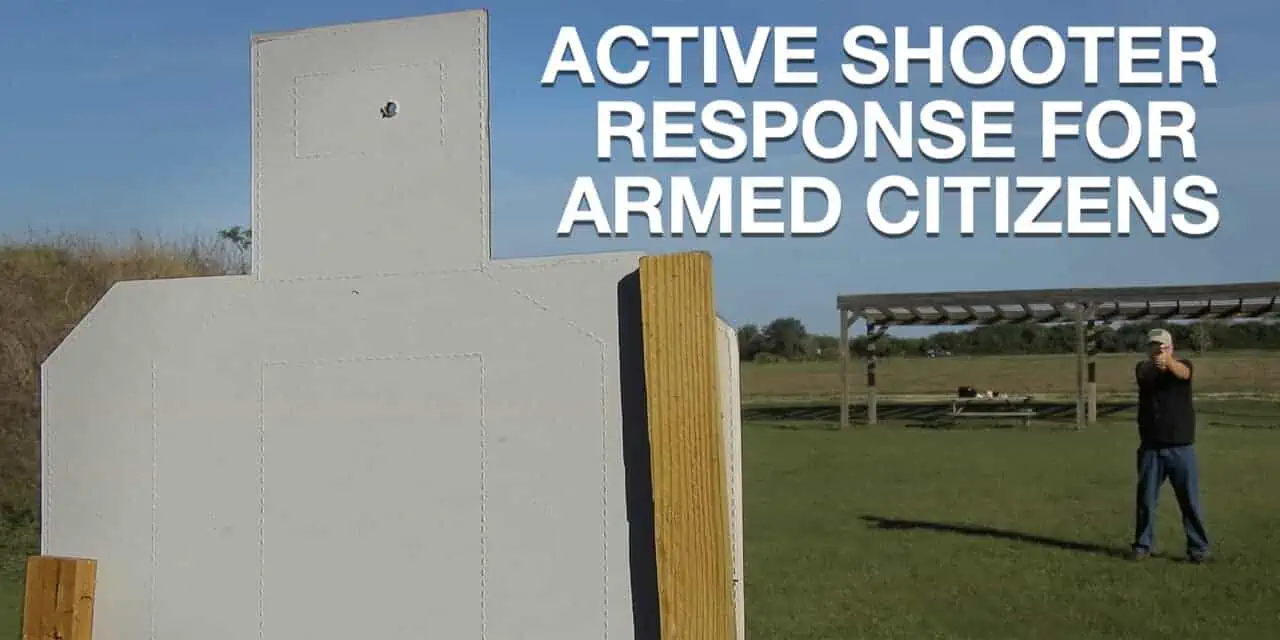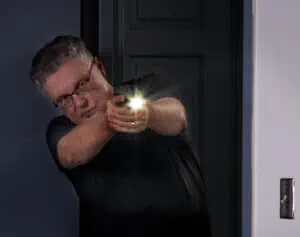Creating An Effective Civilian Response To Active Shooter Events
One of the more interesting things I’ve noticed during my journey through the concealed carry lifestyle is the priority that some people place on stopping an active shooter. I completely understand their worries. An active shooter event is thankfully a very rare occurrence, but it’s effects are so devastating, it’s worth taking a few moments to talk about the civilian response to active shooter events, and how we can minimize their effect on our lives.
First off, when I talk about “civilians” here, it applies equally to armed citizens, off-duty law enforcement personnel and anyone not wearing a uniform and carrying a gun. We’re also going to be concentrating on the response of armed citizens rather than unarmed. There are plenty of resources out there about “Run, Hide, Fight” and other tactics. We’ll be concentrating on what a civilian response to active shooter events looks like if you have a defensive sidearm with you when disaster strikes.
Let’s begin with defining what an active shooter event really is. For our purposes, an active shooter event is an incident where a group of people is attacked for the sole purpose of causing as many deaths as possible in as short amount of time as possible. A mugger does not have this goal. His (or her) intent to acquire personal property. Murder is usually focused on one or two specific people. Murder has a specific intent. An active shooter may have a “hit list” of specific people they target, but they’re not adverse to committing mayhem beyond the people on their list. Active shooters often end? their spree killing when confronted by an armed response, quite often by taking their own life.
Human-caused mass casualty events
As we talked about in the article on building a bail out bag, the civilian response to active shooter events is quite different than the response of law enforcement. Our job as armed citizens is different from the job of law enforcement. We are not tasked with “keeping the peace.” Rather, it is our job to protect ourselves and those in our care. Can we protect ourselves and our loved ones by rushing towards the sound of gunfire and stopping an active shooter with our defensive sidearm? Yes. Should we do that rather than escort our loved ones away from danger first? My answer to that question is “Probably not.” Let me explain why.
To start with, my family means more to me than random strangers do. Therefore, protecting my family is my priority over the protection of others. The best chance of ensuring their survival in an active shooter event is getting them to safety. Once that happens, things might change, but that’s a hurdle I’ll clear later. Secondly, the reward of stopping an active shooter might be great, but so is the risk, especially if the shooter(s) are armed with rifles or shotguns and I have just my defensive pistol. Superior tactics and good marksmanship can negate that advantage, but that is a high mountain to climb.
I also have more than just my gun on a regular basis. I carry a tourniquet and first aid kit with me at all times, and my bail out bag has more trauma gear. A life saved by quickly applying a tourniquet is just as valid as a life saved by stopping an active shooter.
Should You Engage The Shooter?
While on the subject of bail out bags and other gear in your vehicle, let’s return to the idea of a trunk gun. If you get yourself and those in your care to safety, congratulations, job well done. Should you now power up as if you’re in a video game and charge back into the fray? Let’s weigh the outcomes.
If there are still sounds of continuing gunfire and the police are not on-scene or worse still, no sounds of sirens off in the distance, then that’s a decision you’ll need to make. I will not be there when you are faced with this awful choice, so any advice I give here would be moot. If, however, the police are on-scene, then your job is to get out of the way. Let them do their job.
Law Enforcement Response Is Different Than A Civilian Response To Active Shooter Events

They’re coming into the building, and they’re coming in fast. Don’t look like a target when they do.
This would be a good point to talk about how law enforcement responds to this sort of thing versus the civilian response to active shooter events. The response to an active shooter used to revolve around securing the perimeter and waiting for the SWAT team to show up. This changed after Columbine, when most of the deaths in that event happened after the police arrived but before SWAT cleared the building. Now the active shooter procedure for most departments is to have the first officers on the scene enter the building, head towards the sound of gunfire and engage the shooter as quickly as possible.
This has some profound implications for the armed citizen. The police on the scene are going to be looking for a person holding a gun, shooting at people. The less you look like that person, the better your odds of coming out alive when the people enter the building. If you are armed when the police show up, you’ll probably have to turn over your gun until it’s been established who you are and what you’re doing at the scene. All of this, in my opinion, is an argument against using your gun as part of a civilian response to active shooter events, but that is a decision you will need to make.

You’ve made it back to your car and retrieved your trunk gun. Now you look like this to the responding law enforcement officers. Whoops.
Your Worst Case Scenario Is Happening Right Now
Let’s say, though, that getting to safety isn’t an option. Incidents like the West Freeway Church shooting and others show us that sometimes, the best possible civilian response to active shooter events is to end them right then and there. Active shooters quite often take their own lives when confronted with a vigorous response. We can’t count on that, though, and must be ready to take the shot if needed.
Events such as the Fairchild AFB shooting, the shooting at the offices of Charlie Hebdo and the aforementioned West Freeway shooting tell us that we might have to take a 25 yard shot or longer to stop the threat of an active shooter. This can be a tall order for many shooters, especially under the stress of a life-or-death incident. Practicing this shot under the artificial stress of a shot timer can build both your skill with your pistol and also build your confidence that you’ll be up to the task should it ever occur.
Three Seconds Or Less
The practice drill for this shot is quite simple to set up, but rather different to accomplish. Attach a 4×6 index card to the head of a silhouette target that’s 25 yards away. Set your shot timer (you DO have a shot timer, right?) to a three second par time. Take one shot from concealment and hit that index card in under three seconds. Sounds easy, but the added stress of making the shot in a short amount of time can wreak havoc on your finely-tuned pistol skills.
If you’re unfortunate enough to be on-scene when an incident occurs, stopping an active shooter with your defensive handgun is optional at best. Dealing with the horrific aftereffects of an active shooter is something that happens after every attack. The unimaginable carnage brought on by the Boston Marathon bombers made me realize that having a good trauma kit nearby (or better still, on my person) was as helpful (or more helpful) after a mass casualty than having a pistol on me.
The Best civilian response to active shooter events Is To Protect Your Loved Ones
Let’s put it this way: if you’re an armed citizen wondering what the best trunk gun for an active shooter might be, but don’t have trauma gear on you or in your vehicle, you are preparing for the wrong event. Rather than spend hundreds of dollars on a rifle, spend half that amount on trauma gear and training, and you’ll have something that can save lives not just in an active shooter event, but also after a car accident or other similar incident.
Creating an optimal civilian response to active shooter events means understanding it’s not just about being the hero and charging to the rescue. It also means understanding our role as armed civilians and what we can and cannot do with our defensive carry pistol. Surviving an event may mean taking a difficult shot while being shot at, or it could mean walking out the door the minute you spot trouble. Either way, having a plan in place before it’s needed and not just skill with your gun but trauma medicine are two of the keys to keeping yourself and your loved ones safe when something horrific is dropped into your laps.



